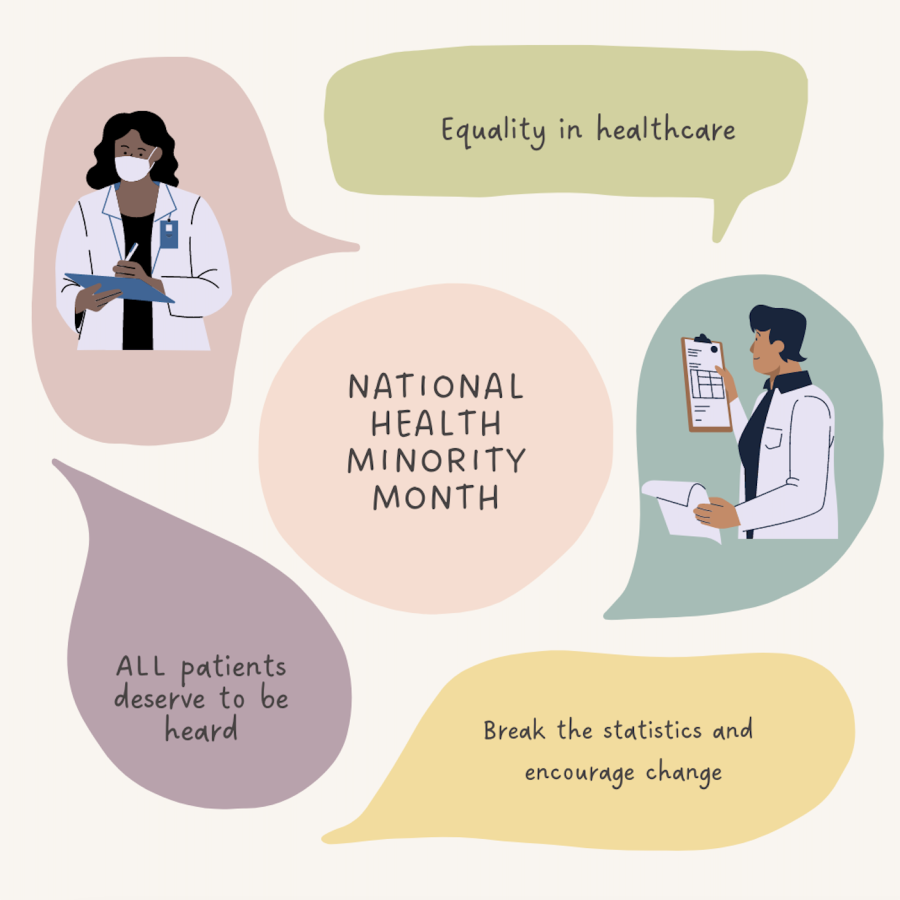National Health Minority Month
April 30, 2023
The month of April serves to raise awareness about health disparities, which refers to the difference in disease risk, conditions and mortality that affect people in ethnic minority groups. Part of this awareness is encouraging health education and disease control, as well as providing culturally important information and care.
According to the U.S. Department of Health & Human Services, this month was first established in 1915 by civil rights leader Booker T. Washington to bring awareness to health disparities affecting African Americans. It is now a reminder to continue improving the health of racial and ethnic minorities.
April 11-17 is designated Black Maternal Health Week. The Centers for Disease Control and Prevention revealed that Black women are three times more likely to die from a pregnancy-related cause than White women. As a result, this week serves as an opportunity to advocate for protections against maternal mortality and reminds people in healthcare of the realities of minority statistics.
In truth, there are more health statistics that should be recognized. Young African Americans are more likely to die from conditions that typically affect older people, including high-blood pressure and stroke, as revealed by Boston University. Additionally, a 2017 report from BU has also revealed that the percentage of U.S. adults diagnosed with diabetes includes 15.1% being American Indian or Alaska Native, 12% being Hispanic and 8% being Asian. As shown, racial health gaps continue to remain persistent.
You may wonder why these statistics are the way they are. In reality, there are many factors that cause these health gaps, some of which include underlying chronic conditions, emotional barriers, and sometimes, structural racism. Kaiser Family Foundation shares that healthcare disparities are often driven by economic stability, physical environment, education, the in-access to healthy options and social integration. Additionally, there are a wide range of conditions and diseases that target certain races based on biological, genetic or environmental factors, but can be difficult to diagnose as the majority of previous medical studies were performed on White patients. In turn, it created difficulties in diagnosing patients.
Fortunately, there has been progress over the years. According to Healthcare Advance, federal policy plans include building more transportation opportunities as well as investments to build new hospitals in socially neglected areas. Further action has been made to make healthcare more affordable as well as increasing the number of physicians of different minorities to increase healthcare diversity which includes AMA’s policy to increase awareness of racial disparities. But there can still be more done to eliminate healthcare gaps.
This awareness month, as well as others, help to remind others about the challenges people in certain groups have had to face. It’s important to remember the information we learn during these months and continue to spread awareness throughout the year.
















